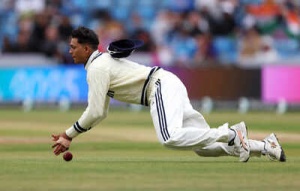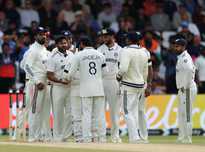The recent and unexpected death of Indian actress Shefali Jariwala has sparked widespread concern and highlighted a growing issue: the increasing number of sudden cardiac deaths (SCD) among seemingly healthy, middle-aged women. While the official cause of Jariwala's death is pending post-mortem and forensic analysis, preliminary reports suggest cardiac arrest.

Sudden cardiac death, once considered rare in young adults, is now occurring more frequently, particularly in India. This alarming trend has caught the attention of the medical community. Cardiovascular diseases account for approximately 28% of all deaths in India, with nearly 10% attributed to SCD. A significant portion of these fatalities occur in individuals between 30 and 50 years old.
India's rapid socioeconomic changes have led to lifestyle shifts, including:
These factors contribute to a rise in hypertension, obesity, diabetes, and coronary artery disease, all of which are major risk factors for SCD.
While historically more prevalent in men, recent studies emphasize the unique and often-overlooked risks faced by women. Unlike men, women who experience SCD often have no prior cardiac diagnoses. Structural abnormalities, such as myocardial scarring and ischemic heart disease, frequently go undetected until post-mortem examinations. Moreover, many women do not exhibit typical warning signs like chest pain or ECG anomalies, making early detection particularly challenging.
Women in their 40s and 50s, like Shefali Jariwala, face a silent but serious risk from underlying cardiac conditions. In younger populations, SCD is often linked to inherited or electrical disorders, including:
These conditions often remain asymptomatic until a fatal arrhythmia occurs.
In this age group, additional factors such as left ventricular hypertrophy, obesity, and myocardial fibrosis further increase vulnerability. The progression of myocardial scarring and fibrosis with age can be attributed to cumulative exposure to cardiovascular risks, repeated micro-ischemic events, and hormonal changes, especially during perimenopause. Conditions like Myocardial Infarction with Non-Obstructive Coronary Arteries (MINOCA), more prevalent in younger women, often leave no trace in autopsies, complicating diagnosis.
Stress also played a significant role in Shefali Jariwala's life, who began her career as a teen star. Takutsobo cardiomyopathy (Broken Heart Syndrome), or stress-induced cardiomyopathy, is a major cause of SCD in women who multitask and experience emotional stress. Shefali also faced personal challenges due to her divorce, along with anxiety, depression, and epilepsy – all of which can impact cardiovascular health. Certain psychiatric medications, particularly those that prolong the QT interval, have also been linked to an increased risk of SCD.
Despite the severity of the issue, women remain underrepresented in preventive heart care. Symptoms like fatigue, palpitations, or breathlessness are often dismissed or misattributed, delaying crucial intervention. Unlike heart attacks, which are caused by blocked arteries, cardiac arrest results from electrical disturbances that cause the heart to stop suddenly. Immediate CPR and defibrillation are often the only lifesaving measures, highlighting the critical need for early risk identification.
Medical experts are now advocating for more targeted public health strategies. There is a need to enhance early screening tools specifically tailored for women, especially during perimenopause when cardiac risks significantly increase.
As the entertainment industry and fans mourn the loss of Shefali Jariwala, her tragic passing serves as a stark reminder of an often-overlooked health crisis. Her death shines a spotlight on the urgent need for systemic changes in how women's heart health is addressed.
Shefali Jariwala was a captivating presence on screen. In the wake of her untimely death, she may well be remembered as a symbol of awareness, a reminder that the heart’s silence can be fatal, and that women's cardiac health demands immediate attention, investment, and action.
Newer articles
Older articles
 SA20 Auction: Teams Given Green Light to Retain Six Players Amidst Increased Salary Cap and New RTM Card
SA20 Auction: Teams Given Green Light to Retain Six Players Amidst Increased Salary Cap and New RTM Card
 India's Harshit Rana Released from Squad Before Second Test Against England in Birmingham
India's Harshit Rana Released from Squad Before Second Test Against England in Birmingham
 Udaipur: India's "City of Lakes" Beckons with Palaces and Timeless Romance
Udaipur: India's "City of Lakes" Beckons with Palaces and Timeless Romance
 Nitish Rana Poised for Delhi Comeback After Disappointing Uttar Pradesh Stint
Nitish Rana Poised for Delhi Comeback After Disappointing Uttar Pradesh Stint
 Former Selector Blasts India's Fielding Blunders After Test Loss to England
Former Selector Blasts India's Fielding Blunders After Test Loss to England
 Anushka Sharma Faces Ageist Criticism at Wimbledon, Fans Launch Online Defense
Anushka Sharma Faces Ageist Criticism at Wimbledon, Fans Launch Online Defense
 Asia Cup 2025: ACC Eyes Mid-September Start Date Amid Easing Tensions
Asia Cup 2025: ACC Eyes Mid-September Start Date Amid Easing Tensions
 Gambhir Defends India's Tailenders After Headingley Collapse, Cites Dropped Catches as Key Factor
Gambhir Defends India's Tailenders After Headingley Collapse, Cites Dropped Catches as Key Factor
 Gavaskar Calls for Kuldeep Yadav's Inclusion, Questions Bumrah's Fitness Ahead of Second Test Against England
Gavaskar Calls for Kuldeep Yadav's Inclusion, Questions Bumrah's Fitness Ahead of Second Test Against England
 Green tea vs lemon water for glowing skin: Myths, benefits, and expert-backed skincare secrets
Green tea vs lemon water for glowing skin: Myths, benefits, and expert-backed skincare secrets